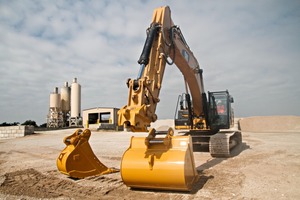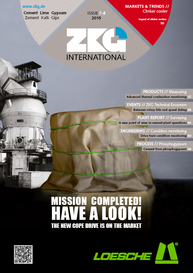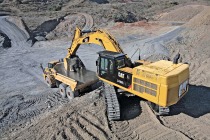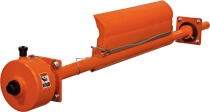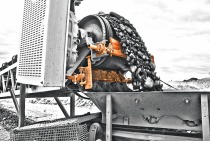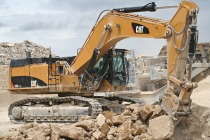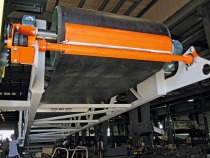Expanded hydraulic excavator versatility
Caterpillar from Peoria, IL/USA has released a new Pin Grabber Coupler for its hydraulic excavators, featuring a powerful, two-stage wedge-lock system for primary pin retention, as well as a positive secondary latch. The system maintains constant hydraulic pressure on the wedge; the coupler frame, rather than the activating cylinder, absorbs most of the forces involved to help ensure long-term durability. In compliance with new safety regulations, the coupler maintains tool position in the event of hydraulic pressure loss.
Designed for an optimum weight-to-strength ratio, the new coupler ensures durable performance in the most severe applications. Weight reductions, as much as 10 % for some models compared with conventional couplers, is a significant design achievement and serves to enhance machine performance. In addition, the coupler incorporates a short-profile configuration that reduces tip radius (distance from the stick mounting pin to the bucket cutting edge) for added digging power, greater fill ratios, and fuel conservation—all with enhanced machine stability.
In any application, coupler operation can be hampered by dirt, rock, and debris packing into and around the coupler. To substantially reduce this risk, the new Pin Grabber Coupler incorporates a debris shield that completely covers the top of the coupler, helping to ensure proper operation and reducing maintenance by eliminating the need for the operator to periodically stop the machine and clear obstructing material.
A lifting eye centered on the back of the coupler (matching the stick centerline) assists operators in keeping loads aligned and in maintaining more precise control when placing items, such as trench boxes. In addition, the shape of the eye, similar in design and size to those used on buckets, accepts larger shackles and enhances shackle stability.
Routine maintenance of the new coupler is simplified with a central greasing block located on the side of the unit and allowing lubrication of all but two grease points. This feature saves time and encourages proper maintenance.
The new coupler is available for excavator models 311 through 349 (D, E, and F Series) and is compatible with Cat work tools and most competitive buckets. In addition, most F Series models have factory-installed auxiliary hydraulic systems ready to operate the coupler.
When employing the Cat range of buckets and specialized work tools, Cat equipment owners not only expand machine versatility, but also have the advantage of using a machine, coupler, and work tool all designed by the same manufacturer and all designed to function seamlessly as an efficient, highly productive system.
//www.caterpillar.com" target="_blank" >www.caterpillar.com:www.caterpillar.com

